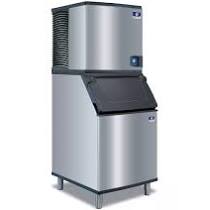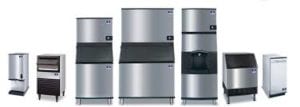
Industrial Ice Makers: 5 Tips for Choosing the Right One
The market for industrial ice makers was valued at a staggering $1.5 billion in 2020 and is expected to grow by $1 billion by 2027.
Customers love ice and when they go out to eat, they expect to get it by the bucketful. But it’s not just the hospitality and food service industries that need ice. There’s increasing demand from the healthcare industry, which uses ice in treatments and to safely transfer medical supplies.
If your business is in the market for a commercial ice machine, there are a few tips to keep in mind that’ll help you select the right one. Let’s explore five of the best together.
1. How Much Ice Do You Need?
Whether you’re running a bar, displaying fresh fish, or transporting medicines, you can never afford to run out of ice. It’s important to take your time and get this calculation right.


Ice machines all come with an ice output rating. This is the amount of ice they can produce in 24 hours. Countertop and under-counter models usually have the smallest output, around 350-400 lbs per day.
Modular units come in all sizes. Some can produce up to 1,900 lbs per day if you go for the largest size.
Calculating Your Ice Needs
Always calculate your needs based on the hottest and busiest day of the year.
Let’s use the 4th of July as an example. Wherever you are in the country, that’s probably going to be one of the busiest and hottest days of the year. The temperature of the water going into your ice machine is going to be higher, which will slow down its production rate.


If you’re in a hospital, summertime holidays like the 4th of July and Memorial day are likely to be some of your busiest days of the year. If you use ice to treat swelling, think about your ice needs on this day and use that as a starting point.
It’s also a good idea to allow yourself a little extra capacity. If you need 800 lbs for your busiest day, choose a machine that can go up to 900 lbs or a little higher. The last thing you want is to be frantically calling round for an expensive ice delivery on the hottest and busiest day of the year.
2. What Shape Is Best for Your Business?
A commercial ice maker will usually only produce one particular shape of ice. The most popular are:
- Cubed
- Nugget
- Shaved
Cubed ice is slow-melting, traditional, and great in beverages. The cubes are large, and that means they can be a choking hazard. This is not a great choice for healthcare settings.
Nugget ice is smaller and more suitable for chewing or sucking. It’s also softer, making it safer for patients. If you’re making frozen cocktails or smoothies, it’s also easier to blend.
Nugget ice goes by a few different names, depending on the brand of industrial ice maker. These include cubelets and chewable nuggets.
Shaved ice, also called flaked ice, is sometimes used to create slushies and snow cones. However, it’s mainly used to create dramatic displays of cold food items and seafood.
3. Modular vs Undercounter vs Countertop
A modular, or head and bin combo, is the ideal solution for a busy bar or restaurant. If you need lots of ice on demand, these machines are able to generate some serious output. Make sure that you buy a bin that can hold around 2/3 the output of the head unit so you’ve got easy access to the ice at all times.
Undercounter industrial ice makers take up about the space of a standard dishwasher. They’re great for compact locations and can produce enough ice for a moderately busy bar. A busy fast food restaurant, however, may find that they do not have the production capacity for its needs.
If your space is limited and your ice needs are fairly low, countertop ice machines are a great option. They’re usually easily transportable and come in a range of sizes.
4. Choose Your Condenser Wisely
Ice machines cool water to form ice using a condenser. There are three options and each has its pros and cons.
Air Cooled Condenser
Commercial ice machines with air-cooled condensers are the most common option available. But you need to make sure that you’ve got plenty of room for hot air to escape.
Without good ventilation, hot air will collect around the machine. That will cause it to heat up, slow production, and generally put more stress on the machine and make it more likely to break down. Before you buy this type of machine, check out the manufacturer’s recommendations regarding clearance and ventilation.
Water Cooled Condenser
If you don’t have enough space for an air-cooled condenser then a water-cooled condenser could be a better option. The heat is transferred into water, which then drains away down a water line.
The problem is that water-cooled condenser ice machines are expensive and tricky to install. It’s usually best to try one of the other options first.
Remote Condenser
A remote condenser is outside the building, a bit like an air conditioner. The advantage is that it’s quiet indoors.
The Best Type of Condenser
For most businesses, an air-cooled condenser is the best option. When they’re installed correctly, they work efficiently and are the most cost-effective solution.
5. Buy, Lease, or Rent?
For some business owners, the expense of buying a commercial ice machine outright may be offputting. But there are options for lease and rent that can make getting one more affordable.
When you lease an ice machine, you pay a fixed low monthly payment. At the end of the term, you have the option to return or purchase the machine.
Renting can be a great option whether you need an industrial ice maker long-term or for a short period. You don’t have the option to buy at the end, but get all the benefits for a fixed monthly payment.
Choose Ice Maker Depot for the Best Industrial Ice Makers
Industrial ice makers can simplify your operations. There’s no need to worry about scheduling expensive ice deliveries and running out when you need it the most.
At Ice Maker Depot, we work with ice machine vendors and manufacturers in every state. Request a quote today and we’ll get back to you with several tailored, local options!

